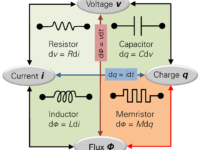Can microbes form memories? Earlier this year, researchers at the University of California San Diego demonstrated that, yes, certain bacteria can remember complex patterns. After exposing a biofilm of Bacillus subtilis to blue light stimulation, researchers observed intermembrane potassium ion channels change shape. This change caused potassium ions to be released from the cell, leaving the inside of the membrane with a lower concentration of potassium than the outside. This phenomenon is referred to as hyperpolarization, and a cell in this state is negatively charged. The new membrane potential persisted after exposure; the biofilm was able to retain the pattern — namely the UCSD logo — for several hours.
The new membrane potential persisted after exposure; the biofilm was able to retain the pattern — namely the UCSD logo — for several hours.
This mechanism of action is strikingly similar to how neurons store information. When a neuronal pulse, or action potential, occurs, sodium ions flood into the cell, resulting in a depolarization of the membrane. Membrane-based memory occurs in neurons when they experience protein modifications, which alter how ions flow in and out of the cell. After treatment with the blue light, B. subtilis potassium channels remained open temporarily. Their response to external ionic stimuli changed, suggesting that perhaps some features of neurons sprung from this ancient bacterial system.
Bacterial biofilm memory could potentially be used for biological computing, a technology that seeks to use living tissue to store and process data. Because individual cells can change the physical characteristics of their membranes, they act as living binary code — with states of zero or one. Thus, the biofilm is a heterogeneous platform that could imitate the digital information storage and processing that have drastically shaped the technological world.
Bacterial biofilm memory could potentially be used for biological computing, a technology that seeks to use living tissue to store and process data
The continued exploration of membrane potential-based memory shows that DNA is not the only way to store information in cells. This research not only helps explain the roots of the nervous system but also paves the way for a new potential application of biology, providing a glimpse into the past and the future of cell function.
Source: 1
Image Source: Flickr






